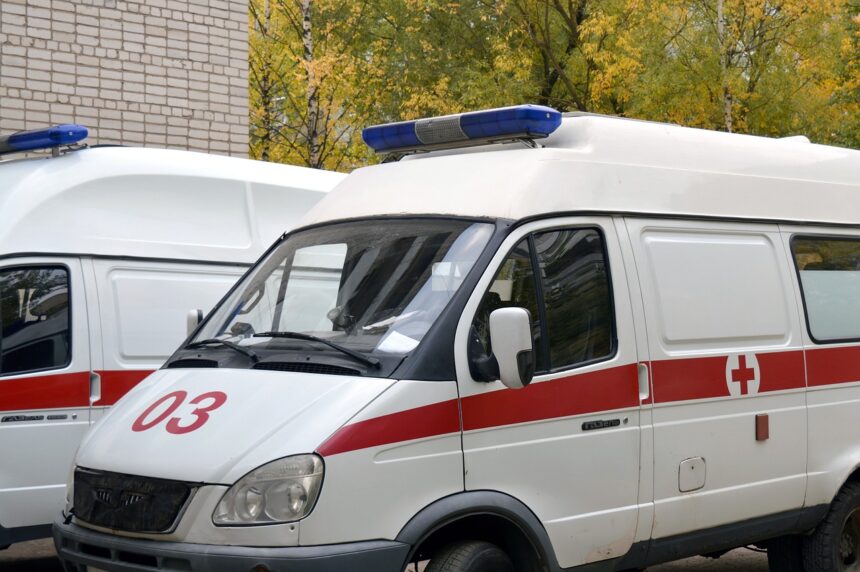The CDC reports that there are 138.9 million visits to the emergency room every year. EMS teams play a crucial role in helping many people get the care that they need.
In order to their jobs effectively, EMS professionals need to properly deliver accessories. One way that they can do so is using stretchers.
Selecting the right accessories for stretchers is a decision that can significantly influence the functionality and efficiency of patient transport. Accessories fitted onto stretchers can range from basic necessities to advanced equipment that simplifies the tasks of emergency medical service (EMS) providers. This is something that they need to understand if they are seeking a career as a paramedic. Ensuring that stretchers are equipped with the appropriate accessories not only improves the patient’s comfort but also enhances the safety and ease of maneuverability for healthcare professionals.
In the world of EMS and hospital care, the integration of high-quality EMS stretcher accessories is critical. These accessories, including safety straps, IV poles, and oxygen tank holders, provide stability and support during patient movement. For more specialized care, adding equipment such as defibrillator shelves or secure storage for medical supplies allows for a higher level of preparedness in every scenario.
Key Takeaways
- Accessories improve stretcher functionality and patient safety.
- Specialized equipment ensures preparedness for various scenarios.
- Essential for efficient EMS and hospital patient transport.
Essential Stretcher Accessories for Enhanced Functionality
Selecting the right accessories for stretchers can significantly impact patient care, offering improved safety, comfort, and efficiency. Let’s explore the specific features that are crucial for optimal functioning of stretchers. You may also want to read this article on the types of medical equipment that is used if you are new to the profession.
Patient Safety and Comfort Features
Straps and Padding: Stretcher straps are vital for patient immobilization, ensuring the patient’s stability during transport. The use of padding reduces the risk of injury, providing a cushioning effect for added patient comfort.
Backrests and Side Rails: Adjustable backrests aid in placing patients in different positions like the Trendelenburg position, beneficial in certain medical conditions. Side rails are essential to prevent patient falls, enhancing overall patient safety.
Durability and Maintenance
Durable Materials: The choice of durable materials for stretchers, such as high-grade aluminum or stainless steel, ensures long-term serviceability.
Regular Maintenance: Conducting regular maintenance is non-negotiable for the upkeep of stretchers. This includes using disinfectant to clean surfaces and lubrication of lock mechanisms to maintain functionality.
Efficiency and Mobility Enhancements
Lightweight and Portability: Stretcher designs that include lightweight materials and foldable stretchers improve portability, allowing for rapid deployment and ease of storage.
Ergonomic Handles and Adjustable Height: Ergonomic handles aid healthcare providers in maneuvering the stretchers with less effort, while adjustable height features facilitate better ergonomics and efficiency in various medical scenarios.
Advanced Equipment Integration for Professional Use
Optimal functionality of stretchers in professional settings demands advanced integration with medical devices and adaptability to various medical scenarios. Ensuring compatibility and specialized adaptations is essential for manufacturers, medical professionals, and emergency services to provide prompt and effective care.
Medical Device Compatibility
IV poles and oxygen tank holders are indispensable for the seamless operation of stretchers, particularly within ambulance stretchers. Manufacturers are increasingly designing these stretchers to allow for easy attachment and adjustment of such medical devices. This enables first responders and emergency medical services to administer vital treatments without delay. Medical devices must readily connect without hindering access to the patient or the functionality of the stretcher, ensuring adaptability to different medical needs, from spinal immobilization in cases of spinal injuries to accessible care for limb injuries.
- Compatibility Features:
- Adjustability for various medical equipment
- Secure attachment points for IV poles and oxygen tanks
- Built-in storage for essential medical supplies
Specialized Stretcher Adaptations
Different scenarios require specialized adaptations, such as bariatric stretchers for heavy-duty use and scoop stretchers for scenarios requiring spinal immobilization. First responders look for stretchers with hydraulic or powered features to manage the weight and transportation of patients smoothly and with less physical strain. For manual stretchers, lightweight and robust materials are preferred to aid quick adjustment and easy maneuverability.
- Adaptation Examples:
- Bariatric stretchers: Enhanced weight capacity, wider dimensions
- Scoop stretchers: Enable secure immobilization and transport of patients with suspected spinal injuries
- Hydraulic or powered assist features for effortless height and position adjustments
Conclusion
In equipping stretchers, it is crucial to prioritize accessories that enhance patient comfort and safety while ensuring ease of maneuverability for operators. Stretcher pads and IV poles facilitate patient well-being and critical care delivery during transport. Features like easy-to-adjust backrests and responsive brakes, highlighted by responsive steering, significantly improve operational handling. Emphasizing these aspects leads to optimized stretcher functionality in medical settings, aligning with the overarching goal of providing exceptional patient care.

